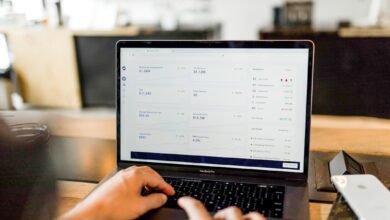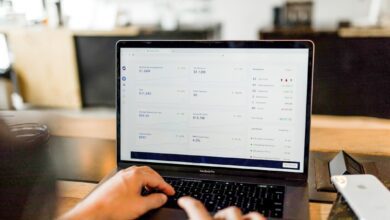Metals in Motion: Navigating Industrial Demand and Investment Strategies in a Changing Economy

In an increasingly interconnected global economy, the dynamics of metal markets play a significant role in shaping financial landscapes and industrial advancements. This article delves into the multifaceted roles of various metals, beginning with silver, which serves as both a critical industrial component and a sought-after investment asset. We will explore how copper prices serve as a barometer for global economic health, reflecting shifts in demand and supply influenced by geopolitical and environmental factors. Additionally, we will examine the burgeoning need for rare earth metals driven by the green energy revolution, highlighting their importance in renewable technologies.
Through an analysis of platinum and palladium, we will compare investment opportunities within these precious metals, while also discussing the broader implications of inflation on metal prices. As sustainability becomes a priority, we will look at the future of aluminum in a circular economy and the effects of mining regulations on market stability. By understanding these trends and their interconnections, investors and industry stakeholders can make informed decisions in a rapidly evolving landscape where metals are not only essential commodities but also vital to achieving economic resilience and sustainable development.
- 1. "Silver's Dual Role: Navigating the Industrial and Investment Landscapes"
- 2. "Economic Indicators: Analyzing Copper Prices as a Reflection of Global Trends"
1. "Silver's Dual Role: Navigating the Industrial and Investment Landscapes"
Silver's dual role as both an industrial metal and a valuable investment asset makes it a unique player in the global market. In the industrial sector, silver is utilized in a variety of applications, including electronics, solar panels, medical devices, and photography. Its high electrical conductivity and antibacterial properties drive demand, particularly in emerging technologies like electric vehicles and renewable energy systems. As industries continue to innovate, the demand for silver in these applications is expected to grow, reflecting its importance in the transition to a more sustainable economy.
On the investment side, silver is often viewed as a safe haven asset, akin to gold, particularly during periods of economic uncertainty or inflation. Investors turn to silver as a hedge against currency devaluation and market volatility, which can drive up its price. Additionally, silver has a lower entry cost compared to gold, making it accessible to a broader range of investors. This duality creates a complex dynamic; while industrial demand can influence prices positively in times of economic growth, investment demand can provide a buffer during downturns.
As the world increasingly focuses on sustainability, silver's role is likely to expand further, driven by both industrial and investment interests. The interplay between these two sectors will continue to shape silver's market dynamics, making it a vital component of discussions around not just metal markets, but also broader economic trends. Balancing its industrial applications with investment potential will be crucial for stakeholders as they navigate the evolving landscape of precious metals.
Silver plays a multifaceted role in both industrial applications and investment markets. As a precious metal, silver has long been valued for its aesthetic qualities and as a hedge against inflation, making it an attractive option for investors. Its price movements often reflect broader economic trends, as silver is highly sensitive to changes in market sentiment. Beyond its investment appeal, silver is indispensable in various industrial applications, including electronics, solar panels, and medical devices. The growing demand for renewable energy technologies, particularly solar energy, has spurred increased consumption of silver in photovoltaic cells, further intertwining its industrial significance with investment dynamics.
Turning to copper, its prices serve as a barometer for global economic health. As a key component in construction and electrical wiring, fluctuations in copper prices often indicate shifts in economic activity. Rising prices can signal increased industrial production and infrastructure development, while falling prices may indicate economic slowdowns. Analysts closely monitor copper market trends to gauge overall economic sentiment, making it a vital indicator for investors.
The demand for rare earth metals has surged due to the rise of green energy technologies. These metals are crucial for manufacturing components such as magnets, batteries, and catalysts used in electric vehicles and renewable energy systems. As nations strive to transition to greener economies, the demand for these resources is expected to grow, potentially leading to supply constraints and price volatility. This shift underscores the importance of securing stable supply chains for rare earth metals to support future technological advancements.
When comparing platinum and palladium, both metals have unique investment characteristics. Platinum is often seen as a more stable long-term investment, favored for its industrial uses in catalytic converters and its scarcity. In contrast, palladium has recently outperformed platinum due to its increasing demand in the automotive industry, particularly for gasoline engines. Investors must weigh factors such as market trends, industrial demand, and geopolitical influences when deciding between these two precious metals.
Metals, particularly precious and industrial ones, play a crucial role in diversifying investment portfolios. They often behave differently from traditional assets like stocks and bonds, providing a hedge against market volatility. Including metals in a portfolio can enhance risk-adjusted returns, especially during periods of economic uncertainty. Investors looking to diversify can choose from a range of metals, each with its own risk and return profile.
Inflation significantly impacts the prices of both precious and industrial metals. As inflation rises, the purchasing power of currency decreases, leading investors to seek refuge in tangible assets like metals. This can drive up demand and prices. Conversely, during periods of low inflation, the demand for metals may wane, resulting in price declines. Understanding the correlation between inflation and metal prices is essential for investors aiming to navigate the complexities of the market.
Looking ahead, aluminum is poised to play a crucial role in a sustainable economy. Its lightweight properties and recyclability make it an ideal candidate for applications in transportation, packaging, and construction. As industries seek to reduce their carbon footprints, aluminum's demand is expected to grow, particularly in electric vehicles and renewable energy infrastructure. Investments in aluminum production and recycling technologies are likely to yield significant returns as the world transitions to more sustainable practices.
Finally, mining regulations significantly influence metal prices. Stricter regulations can lead to increased production costs and supply constraints, driving prices higher. Conversely, relaxed regulations can enhance supply and stabilize prices. Investors must stay informed about regulatory changes in key mining regions, as these can have profound implications for the availability and pricing of various metals in the market.
2. "Economic Indicators: Analyzing Copper Prices as a Reflection of Global Trends"
Copper prices serve as a crucial economic indicator, reflecting the health of the global economy. As a fundamental component in various industries, particularly construction and electronics, fluctuations in copper prices can signal changes in economic activity. When the economy is robust, demand for copper typically increases due to higher construction projects and manufacturing outputs, driving prices up. Conversely, during economic downturns, reduced industrial activity often leads to a decline in copper demand, resulting in lower prices.
The relationship between copper prices and global economic trends is further highlighted by their sensitivity to geopolitical events and policy changes. For instance, trade tensions can disrupt supply chains, causing price volatility. Additionally, major economies' monetary policies, such as interest rate adjustments, can influence investor sentiment and, consequently, copper prices.
Moreover, the rise of emerging markets, particularly in Asia, has intensified demand for copper, making it a bellwether for global growth. As countries invest in infrastructure and urbanization, the demand for copper increases, reinforcing its role as an economic barometer.
In summary, analyzing copper prices provides valuable insights into broader economic conditions, making it an essential tool for investors, policymakers, and economists alike. By tracking these price movements, stakeholders can gauge economic strength, anticipate market shifts, and make informed decisions in their respective fields.
In conclusion, the multifaceted roles of metals in both industrial applications and investment strategies underscore their significance in today's economy. Silver, with its unique position as both a critical component in various industrial processes and a sought-after investment asset, exemplifies this duality. Similarly, copper prices serve as a barometer for global economic health, providing insights into broader market trends and consumer confidence.
As we shift towards greener energy technologies, the demand for rare earth metals is poised to increase, highlighting the intersection of sustainability and market dynamics. The ongoing debate between platinum and palladium investments further emphasizes the need for investors to carefully consider market conditions and long-term viability. Additionally, metals play a crucial role in diversifying investment portfolios, offering a hedge against inflationary pressures that can significantly impact the pricing of both precious and industrial metals.
Looking ahead, the future of aluminum in a sustainable economy appears promising, driven by its lightweight properties and recyclability. However, the impact of mining regulations cannot be overlooked, as they play a vital role in shaping metal prices and influencing supply chains. Together, these elements paint a comprehensive picture of the metals market, one that is intricately linked to economic trends, technological advancements, and environmental considerations. As investors and industries navigate this complex landscape, understanding the dynamics at play will be essential for making informed decisions in an ever-evolving market.





